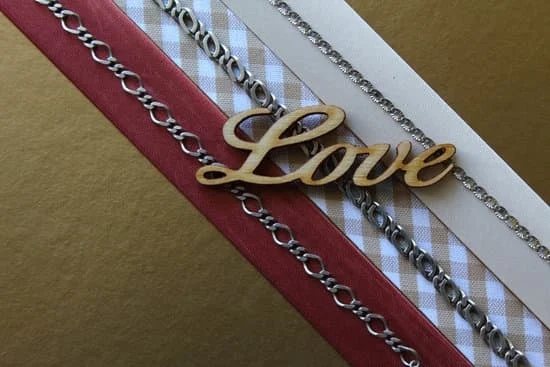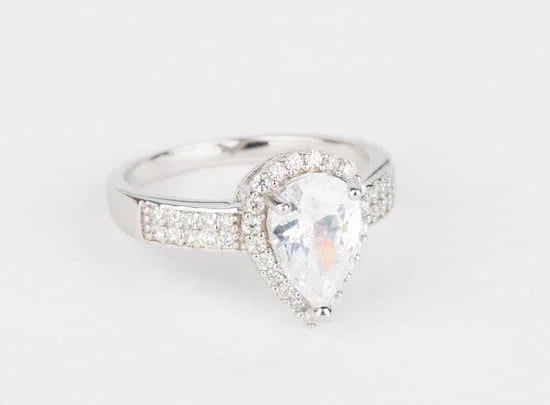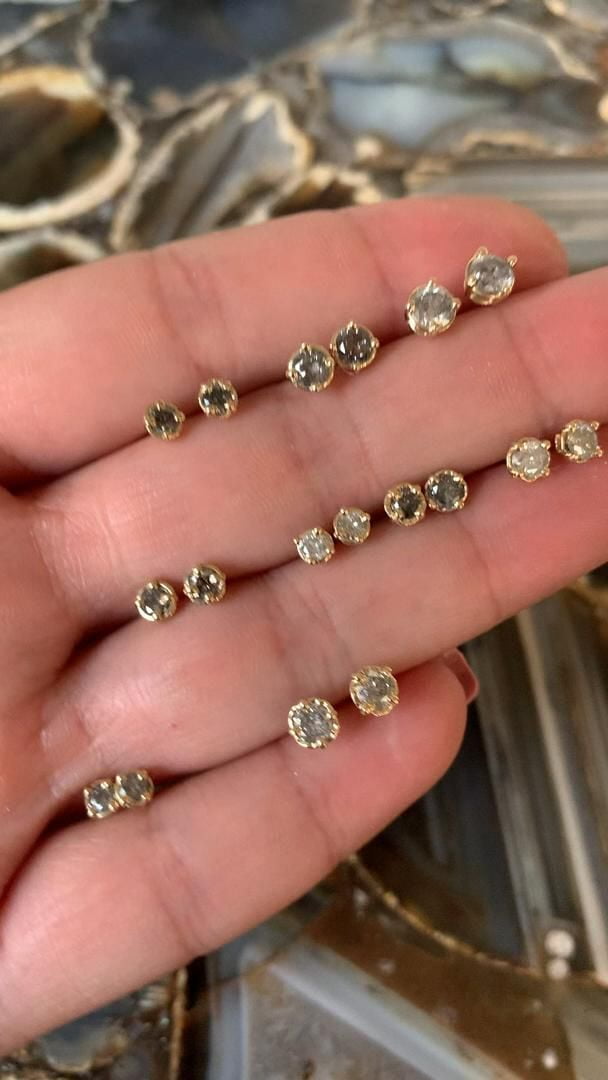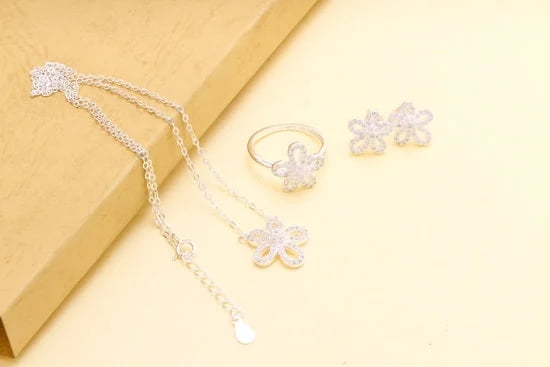How much is the retail markup of fine jewelry? Understanding the basics of retail markup in the fine jewelry industry is essential for both consumers and retailers. This article will explore the factors that influence retail markup, how it is calculated, and the role of quality and craftsmanship. Additionally, we will provide industry insights and tips for consumers to better understand retail markup in the fine jewelry sector.
When it comes to purchasing fine jewelry, consumers often wonder about the pricing and how much of a markup they are paying. The retail markup of fine jewelry can vary widely depending on various factors, such as the type of jewelry, quality, and market trends. Understanding these basics can help both consumers make informed decisions and retailers set competitive prices.
Factors that influence retail markup in fine jewelry include the cost of materials, labor, brand reputation, and market demand. Each of these elements plays a critical role in determining the final price of fine jewelry pieces. By exploring these factors in more detail, consumers can gain a better understanding of why certain pieces are priced the way they are.
Calculating the retail markup in fine jewelry involves understanding the cost price and applying a certain percentage to determine the selling price. However, this simple calculation often overlooks other important considerations such as overhead costs, marketing expenses, and profit margins. It’s essential for consumers to grasp how these calculations are made to make informed decisions when making a purchase.
Factors That Influence Retail Markup in Fine Jewelry
Quality of Materials
One of the primary factors influencing the retail markup of fine jewelry is the quality of materials used. Higher quality materials such as 18k gold, platinum, and conflict-free diamonds often result in a higher retail markup. The cost of sourcing and utilizing these high-quality materials contributes to the final price tag on fine jewelry pieces.
Brand Reputation
The reputation and prestige of the brand also have a significant impact on retail markup in fine jewelry. Established luxury brands with a strong reputation for quality and craftsmanship can command higher prices and markups compared to lesser-known or emerging brands. Consumers are often willing to pay higher prices for fine jewelry from well-known brands due to their perceived value.
Craftsmanship and Design Complexity
Another key factor that influences retail markup in fine jewelry is the level of craftsmanship and design complexity. Intricately designed pieces or those that require a high level of skill and labor to create are often subjected to higher markups. The amount of time, effort, and expertise invested in crafting these pieces contributes to their overall retail price.
Understanding how these factors influence retail markup can provide consumers with valuable insights into the pricing of fine jewelry. By considering these elements, consumers can make more informed purchasing decisions when investing in high-quality fine jewelry pieces.
By understanding the various factors that influence retail markup in fine jewelry, consumers can gain insight into why certain pieces are priced higher than others. From quality materials to brand reputation and craftsmanship, each element plays a crucial role in determining the final retail price of fine jewelry.
Calculating the Retail Markup in Fine Jewelry
When it comes to calculating the retail markup in fine jewelry, there are several key factors to consider. Understanding the pricing of fine jewelry can be complex, but having a grasp on how the retail markup is calculated can empower consumers to make informed purchasing decisions.
Factors that Influence Retail Markup in Fine Jewelry:
1. Cost of Materials: The cost of precious metals and gemstones can significantly impact the retail markup of fine jewelry. For example, a piece made with rare and high-quality diamonds will likely have a higher markup compared to a piece made with more common materials.
2. Craftsmanship and Design: The level of craftsmanship and the intricacy of the design can also influence the retail markup. Handcrafted or custom-designed pieces may have a higher markup than mass-produced items due to the skill and time required to create them.
3. Brand Reputation: The reputation and brand recognition of a jewelry retailer can also play a role in determining retail markup. Established luxury brands may be able to command higher markups compared to lesser-known retailers.
Understanding these factors can give consumers insight into how much they’re paying for when purchasing fine jewelry, beyond just the materials themselves. This knowledge empowers customers to shop smartly and make purchases based on their values and priorities.
Industry Insights on Retail Markup in Fine Jewelry:
– According to industry experts, the average retail markup for fine jewelry falls between 100% to 300%. This wide range reflects the various factors that contribute to pricing, including quality, brand name, and market demand.
– Fine jewelry retailers often aim for a balance between maintaining profitability and staying competitive in the market. This means that while some pieces may have higher markups due to their exclusivity or rarity, others may offer more accessible pricing.
– In an age where transparency is increasingly valued by consumers, some jewelry retailers are starting to openly communicate how they calculate their markups, offering customers more insight into their pricing strategies.
Ultimately, understanding how much is the retail markup of fine jewelry allows consumers to make more informed decisions about their purchases. By considering factors like material costs, craftsmanship, brand reputation, and industry insights, shoppers can navigate the world of fine jewelry with confidence.
Understanding the Pricing of Fine Jewelry
The Value of Materials and Labor
When it comes to understanding the pricing of fine jewelry, it’s essential to recognize the value of the materials used and the labor involved in creating each piece. Fine jewelry often features precious metals such as gold, silver, or platinum, as well as high-quality gemstones like diamonds, sapphires, and emeralds.
The cost of these materials, along with the expertise and time required to craft each piece, directly influences its retail markup. Consumers should consider both the quality of the materials and the level of craftsmanship when evaluating the price of fine jewelry.
Market Trends and Demand
Another factor that contributes to the pricing of fine jewelry is market trends and consumer demand. Just like in any other industry, supply and demand play a significant role in determining retail markup. When certain styles or designs are particularly popular, it’s not uncommon for retailers to adjust their prices accordingly.
Likewise, limited edition or exclusive pieces may command a higher retail markup due to their scarcity and desirability in the market. Understanding these market trends can help consumers make informed decisions when purchasing fine jewelry.
Branding and Reputation
The branding and reputation of a jewelry retailer also impact the pricing of fine jewelry. Established brands with a strong reputation for quality and design may set higher retail markups compared to lesser-known or independent jewelers. This is because consumers are often willing to pay a premium for the assurance of superior craftsmanship and authenticity that comes with renowned brands. It’s important for consumers to consider how branding influences pricing when evaluating different options for purchasing fine jewelry.
The Role of Quality and Craftsmanship in Retail Markup
The retail markup of fine jewelry is influenced by various factors, but one important aspect that significantly affects pricing is the quality and craftsmanship of the piece. Fine jewelry crafted with high-quality materials and exceptional attention to detail often commands a higher retail markup compared to mass-produced or lower-quality pieces. Consumers are willing to pay more for fine jewelry that exhibits superior craftsmanship and uses precious metals and gemstones of outstanding quality.
Quality and craftsmanship play a crucial role in the retail markup of fine jewelry. When jewelry is meticulously designed and made with precision, it not only adds to the overall aesthetic appeal but also enhances the value of the piece. This level of craftsmanship requires skill, time, and expertise, which are reflected in the retail price. Additionally, superior quality materials such as diamonds, emeralds, rubies, and sapphires will contribute to a higher retail markup due to their rarity and desirability.
In understanding how much is the retail markup of fine jewelry, consumers should recognize the significance of quality and craftsmanship in determining prices. A well-crafted piece of fine jewelry represents an investment due to its enduring beauty and lasting value.
While it may come with a higher price tag, the superior quality and meticulous workmanship justify the retail markup. It’s essential for consumers to appreciate these factors when making purchasing decisions in order to fully understand why certain pieces have a higher retail markup than others.
| Quality/Craftsmanship Element | Impact on Retail Markup |
|---|---|
| Exceptional Craftsmanship | Adds significant value; justifies higher pricing |
| High-Quality Materials | Rarity increases desirability; contributes to higher prices |
Comparing Retail Markup in Different Types of Fine Jewelry
When it comes to comparing the retail markup in different types of fine jewelry, it’s important to understand that the markup can vary significantly based on the type of jewelry and where it is being sold. Here are some examples of how retail markup differs among various types of fine jewelry:
- Diamond Jewelry: Diamond jewelry, especially those featuring high-quality diamonds, often have a higher retail markup compared to other types of fine jewelry. The rarity and desirability of diamonds contribute to their higher markup.
- Gold Jewelry: Gold jewelry, including items such as chains, rings, and bracelets, typically have a moderate retail markup. The price of gold itself fluctuates in the market, influencing the retail markup on gold jewelry.
- Gemstone Jewelry: Jewelry featuring colored gemstones like sapphires, rubies, and emeralds may have varying retail markups depending on the quality and size of the stones. High-quality gemstones can command a higher markup.
Understanding these differences in retail markups can help consumers make informed decisions when purchasing fine jewelry. It’s essential to consider not only the intrinsic value of the materials used but also factors such as craftsmanship and brand reputation.
In addition to the type of jewelry, the retailer itself also plays a significant role in determining the retail markup. While luxury boutiques may have higher markups due to their brand prestige and exclusivity, online retailers or wholesalers may offer lower markups due to reduced overhead costs. Ultimately, understanding these variations in retail markups can empower consumers to make more confident purchases when shopping for fine jewelry.
Industry Insights on Retail Markup in Fine Jewelry
When it comes to the retail markup of fine jewelry, industry experts have varying opinions on how much is considered standard. According to a report by The Jewelry Industry Summit, the average retail markup for fine jewelry is around 300%. However, this can fluctuate significantly depending on the brand, type of jewelry, and market demand. For example, designer luxury brands may have a higher retail markup compared to more mainstream jewelry retailers.
One of the key factors that influence retail markup in fine jewelry is the cost of materials. Precious metals like gold and platinum, as well as gemstones such as diamonds and emeralds, play a significant role in determining the final retail price. In addition, craftsmanship and labor costs also contribute to the overall markup.
Understanding the retail markup in fine jewelry is crucial for both consumers and industry professionals. For consumers, knowing how much is added to the production cost can help them make informed purchasing decisions. Meanwhile, industry professionals must carefully consider their pricing strategies to stay competitive in the market while maintaining profitability. Overall, keeping an eye on industry insights and market trends can offer valuable guidance when it comes to understanding retail markup in fine jewelry.
| Aspect | Details |
|---|---|
| Average Retail Markup | Around 300% |
| Factors Influencing Retail Markup | Cost of materials, craftsmanship, labor costs |
| Importance for Consumers | Informed purchasing decisions |
Tips for Consumers on Understanding Retail Markup in Fine Jewelry
When it comes to purchasing fine jewelry, consumers often wonder how much of the retail price is actually markup. Understanding the retail markup in fine jewelry can help consumers make informed decisions and ensure they are getting a fair deal. Here are some tips for consumers on understanding retail markup in fine jewelry.
First and foremost, it’s important for consumers to understand that the retail markup on fine jewelry can vary significantly based on various factors. Factors such as the brand reputation, quality of materials used, craftsmanship, and market demand all play a role in determining the retail markup. One way for consumers to gauge the fairness of the retail markup is to research and compare prices from different retailers before making a purchase.
Another tip for consumers is to consider the value they are getting for the price they pay. Quality and craftsmanship are crucial aspects that can justify a higher retail markup. High-quality materials and expert craftsmanship contribute to the overall value of fine jewelry, which may be reflected in the retail price. Consumers should prioritize quality over lower prices when investing in fine jewelry.
Furthermore, consumers should take advantage of industry insights and expert opinions when trying to understand retail markup in fine jewelry. Industry professionals can provide valuable information about market trends, pricing strategies, and what factors contribute to higher or lower markups. By staying informed, consumers can make better purchasing decisions when it comes to buying fine jewelry.
By keeping these tips in mind, consumers can navigate through the world of fine jewelry with a better understanding of how much of the retail price is due to markup. Ultimately, an informed consumer is empowered to make confident choices when it comes to purchasing fine jewelry that meets their expectations of both quality and value.
The Future of Retail Markup in the Fine Jewelry Industry
In conclusion, the future of retail markup in the fine jewelry industry will continue to be influenced by various factors, including consumer demand, economic conditions, and industry trends. As technology advances and e-commerce becomes more prevalent, the way fine jewelry is marketed and sold may also impact retail markup. Additionally, consumer education and awareness about the pricing of fine jewelry are likely to play a crucial role in shaping the future of retail markup.
Consumers can expect to see more transparency in pricing as retailers strive to build trust and loyalty. Understanding the value of quality and craftsmanship will also become increasingly important as consumers seek to make informed decisions about their fine jewelry purchases. With a focus on sustainability and ethical sourcing becoming more prevalent in the industry, this too may impact retail markup as consumers prioritize these values in their purchasing decisions.
Overall, while it is difficult to predict exactly how much retail markup fine jewelry will have in the future, it is clear that consumer preferences and industry developments will continue to shape pricing strategies. As always, staying informed and being discerning when making purchases will be key for consumers who want to understand how much is the retail markup of fine jewelry and make confident buying decisions.
Frequently Asked Questions
What Is the Typical Markup on Fine Jewelry?
The typical markup on fine jewelry can vary greatly depending on the retailer or brand. Generally, the markup can range from 50% to 100% or even more for luxury pieces. This is because fine jewelry often involves high quality materials and craftsmanship, as well as the added value of the brand name or designer.
What Is the Profit Margin on Fine Jewelry?
The profit margin on fine jewelry also varies, but it is typically around 25% to 30%. This means that for every dollar of revenue from selling fine jewelry, the retailer makes a profit of around 25 to 30 cents after accounting for all expenses including the cost of goods sold.
What Is the Markup on Custom Jewelry?
The markup on custom jewelry can be even higher than that of regular fine jewelry, especially if it involves unique designs or rare materials. Since custom jewelry is made-to-order and often requires special expertise or additional labor, retailers may apply a higher markup to cover these extra costs and ensure a reasonable profit margin.

Welcome to my jewelry blog! My name is Sarah and I am the owner of this blog.
I love making jewelry and sharing my creations with others.
So whether you’re someone who loves wearing jewelry yourself or simply enjoys learning about it, be sure to check out my blog for insightful posts on everything related to this exciting topic!





